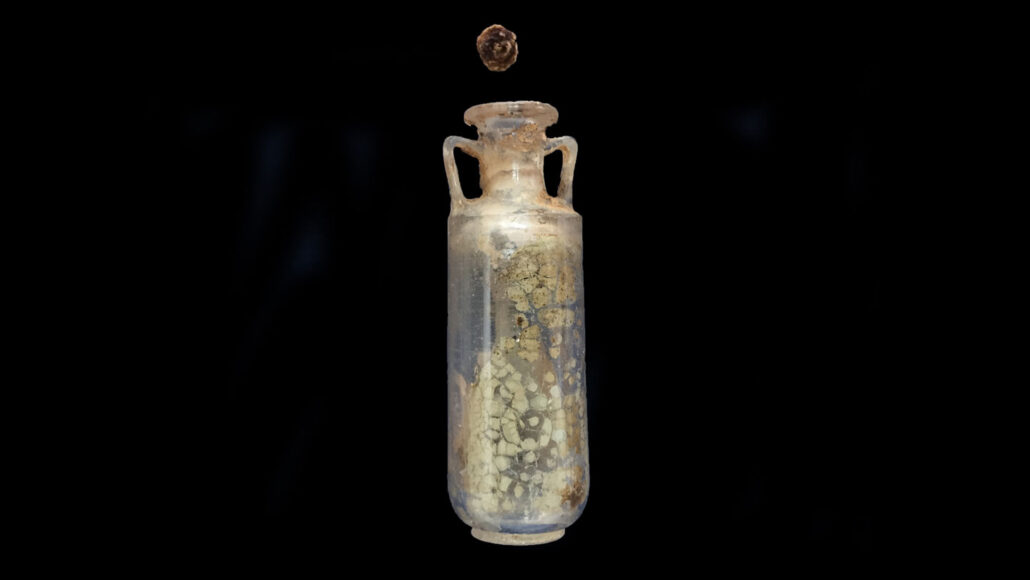The fragrance of ancient Romans uncovered through an antique perfume bottle

A remarkably well-preserved perfume bottle is offering a rare opportunity to experience the scents of ancient Rome — including a familiar one.
According to a report published in Heritage on May 23, chemical analyses of the contents of a 2,000-year-old bottle have revealed that one of the ingredients was patchouli, a scent that is still commonly used in modern perfumes but whose use by the Romans had hitherto been unknown.
The bottle, made of quartz, dates from the first century and was discovered in 2019 in an egg-shaped lead case containing a glass urn and the remains of a woman in her 40s. Cremation was a common form of burial in Roman times, and the bottle was likely intended to accompany the deceased into the afterlife.
The bottle was already an unusual object due to its small size and exquisite detail, which made it a rare find at a burial site. The seal on the bottle was made of a dolomite top covered in a dark, tar-like substance that chemical analysis revealed to be bitumen. Inside the jar, there was a solid mass — the preserved original content of the bottle.
Ancient written perfume recipes have previously revealed that Romans mixed fragrant extracts with vegetable oils such as olive oil as a preservative. In earlier studies, floral extracts have been detected in bottles used to keep cosmetics, known as unguentaria. However, this is the first time the source of an aroma in a sealed bottle has been identified.
Laboratory analysis revealed that the bottle contained patchouli and vegetable oil. Patchouli is derived from a tropical plant in Southeast Asia called Pogostemon cablin and likely reached Rome through trade networks.
To rule out nard oil, which has many components in common with patchouli oil but in different proportions, researchers used gas chromatography coupled with mass spectrometry to identify multiple substances typical of patchouli essential oil, including patchoulenol or patchouli alcohol. The bitumen seal played a key role in preserving the patchouli’s chemical signature, trapping the perfume molecules through a process called adsorption.
The discovery adds to the growing body of research on understanding the multidimensional picture of ancient life, including its sounds and smells. As Ruiz Arrebola notes, “There are research groups and companies trying to re-create ancient perfumes. This will give them very important clues.”
However, the discovery does not mean that the whole of the Roman Empire smelled like patchouli. "At the time, perfumes were reserved for high society," says Ruiz Arrebola, who notes that the use of an exotic essence that was likely imported from elsewhere and bottled in a costly jar points to a wealthy owner.
It is unclear whether the unopened bottle was intended for use in daily life or had a religious or funerary meaning. The presence of the bottle inside a funerary urn suggests an intimate gesture not meant for public display or use. Luxury "is useless if it can't be displayed in front of society,” says historian Jordi Pérez González of the University of Girona in Spain, who was not involved with the study.
Our mission is to provide accurate, engaging news about science to the public. As a nonprofit news organization, we are only able to do so with your support. Investing in quality science journalism by donating today enables us to keep our content free and accessible to the next generation of scientists and engineers.




